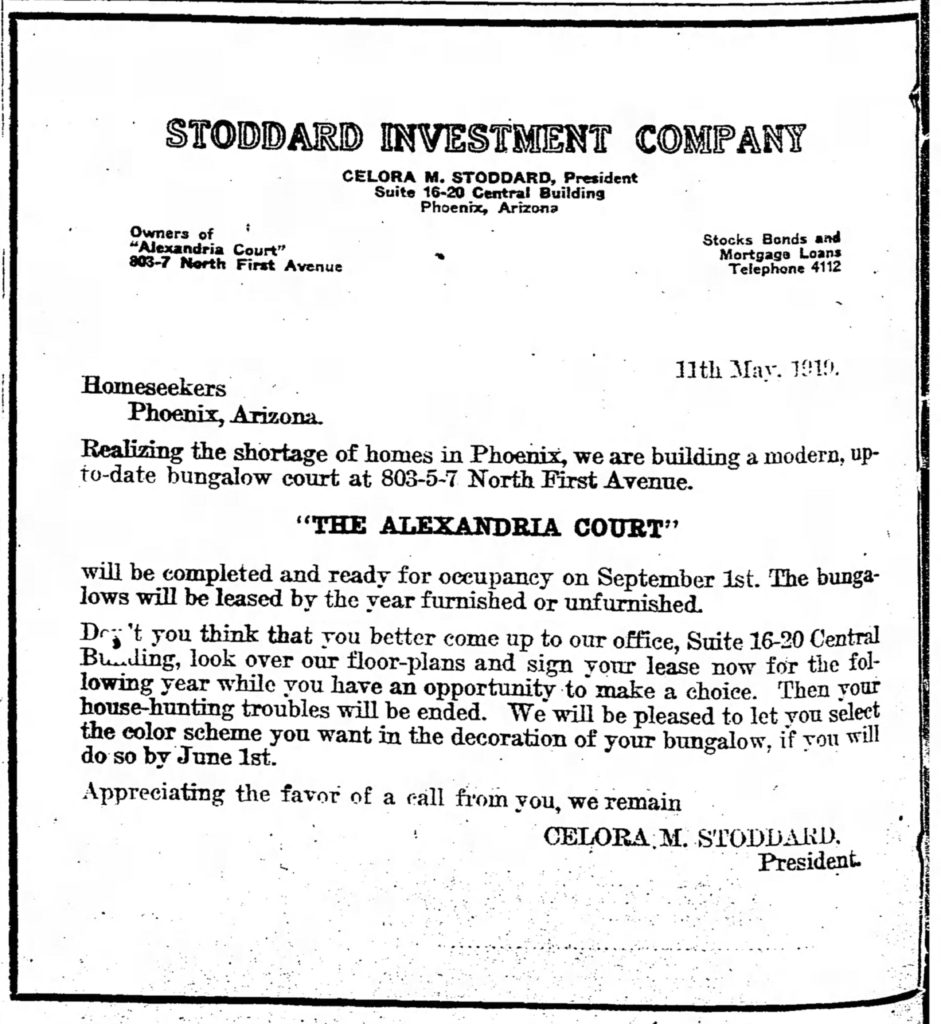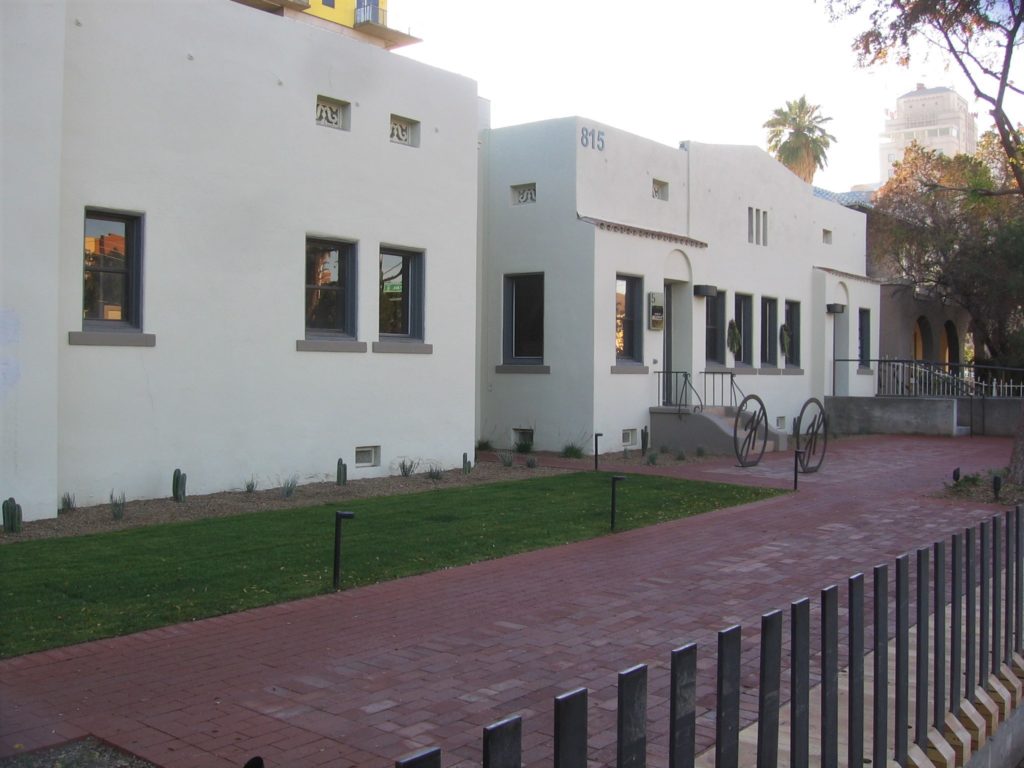Donna Reiner, a local historian and a good friend of Get Your PHX, has written many articles over the years for the Arizona Republic and others about what came before us. We use her services when we list properties of historic significance to help us tell the stories behind the homes.
We are happy that Donna is allowing us to re-publish some of her articles on a monthly basis. If you or your business ever needs a historian, let Donna know at laydeescholar “at” hotmail.com.
“I have been influenced by the needs of Phoenix and by the fact that this is home.” With that, Celora M. Stoddard who had recently been discharged from the Army after serving in France during WWI, declared his intent to build a special complex. Arizona looked promising to Stoddard after the war.

Stoddard had originally come out west from Binghamton, NY as a young boy and spent some time in Stoddard, AZ, a small copper mining community northeast of Mayer which had been named after his father. When he moved to Phoenix along with his parents, he continued working for the family company. Later he formed his own firm and focused on investments rather than copper, but still maintained his managerial position with Stoddard Mining.
One of Stoddard’s investments was The Rose Tree, an exquisite confectionery shop and tea room which opened in October 1914. It certain gave Donofrio’s some competition although it was hard for Donofrio’s to surpass The Rose Tree’s twice a week dances. Stoddard also purchased lots in newly opened subdivisions as so many other Phoenicians were doing.

In 1917, Stoddard was part of the Great Western Film Corporation whose initial aim was to establish a film studio in Phoenix (Tucson was the competing site). Yes, Stoddard dabbled in a variety of businesses and then the European war changed things. Stoddard registered for the draft, entered the army, took officer’s training, and was shipped to France.
Recognizing that many soldiers who were returning home had moved to Arizona and had no place to live, Stoddard decided to build a “modern up-to-date bungalow court” the summer of 1919. Each unit had five rooms and an individual outdoor sleeping area on the roof which would be used in the summer months. The bungalow court would be “high class,” have janitor service, and a communal garage along with plenty of shade.
Ads touted that the complex of 10-units was located “in the most exclusive residential section.” And where might that be? It was Bennett Place encompassing Central to Seventh Avenue and Roosevelt to Fillmore. Now a portion of Bennett Place is part of Roosevelt Historic District.

One quirky event related to Alexandria Court (the rather romantic sounding name) occurred when Stoddard decided to sell the complex. In fact, he traded the bungalows with Isaac Rosenzweig a local jeweler for 80 acres of farm land near Scottsdale. Apparently both parties were quite satisfied with the deal.
If you ride the light rail down 1st Avenue today, you go right passed Alexandria Court. Now 815 N. 1st Avenue (even the numbering has changed from the original) is offices. A far cry from Stoddard’s vision, but they have not been demolished.









